Understand
Measuring Value in the Open Health Ecosystem: The Model
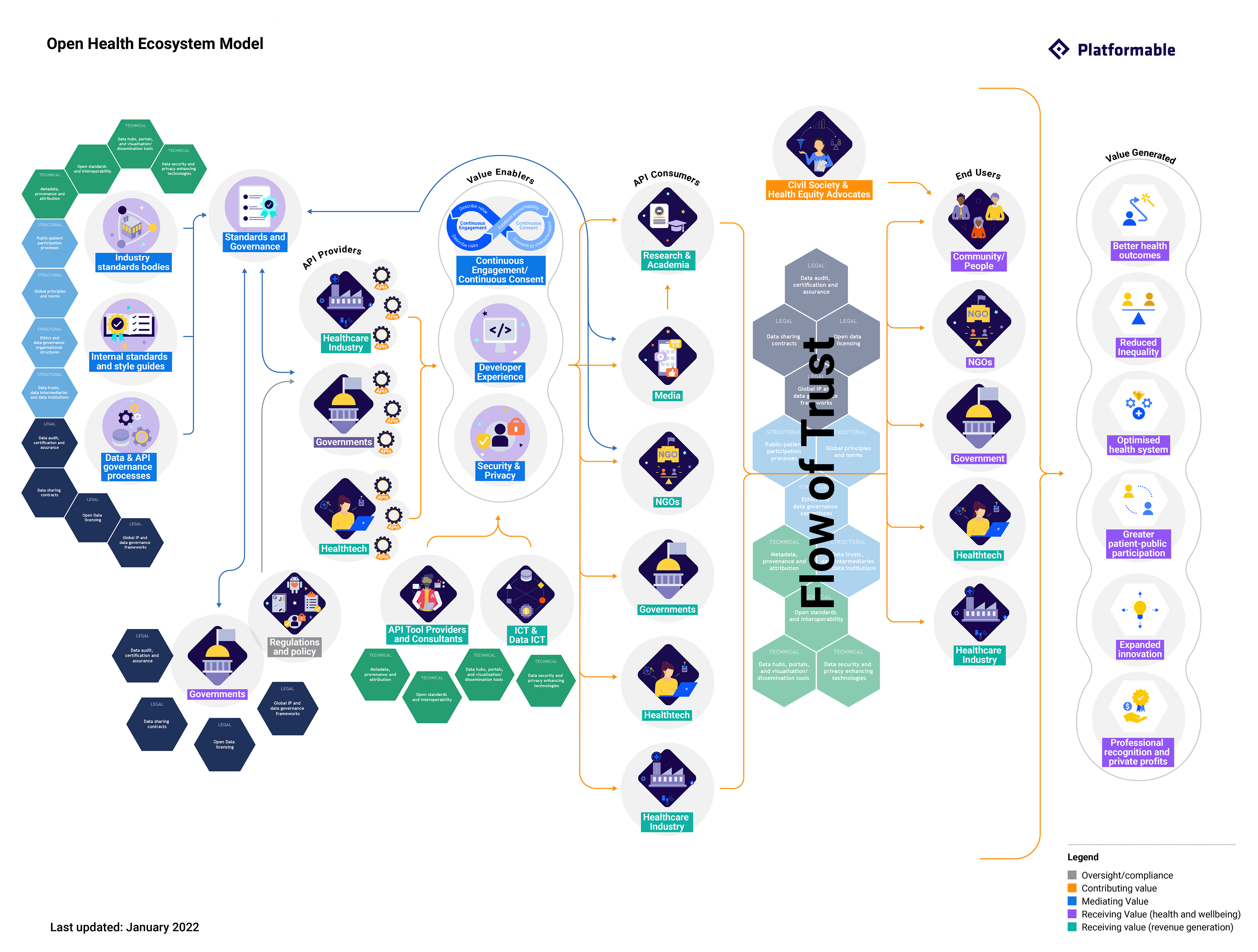
Why we need an open ecosystems approach to health
Our society today is facing some major challenges:
- Populations are expanding globally, especially in urban areas
- Populations in much of the Global North are ageing
- Populations in the Global South are growing with limited resources available
- Climate crises and the pandemic means health needs are changing quickly
No one organisation or stakeholder can address all of these challenges. And no single entity can take full advantage of the new opportunities brought on by advancements in digital health. This needs collaborative action, using a variety of components: data, standards, technologies, community participation, researchers, and more!
This is where open ecosystems come into play. The benefits of working in an open ecosystem include that health outcomes can improve, resources can be optimised, and individuals and businesses can be recognised for their contributions. In fact, we have identified 6 key benefits that can be generated from open ecosystem approaches to health infrastructure:
- Better health outcomes throughout the patient journey
- Reduced inequalities through using data to better target services and disaggregate data to understand impacts on vulnerable populations
- Optimised health service and resource efficiencies
- Increased participation, understanding of connections and collaborations, and sense of engagement and involvement in health decision-making by communities and all stakeholders
- Groundbreaking innovation, new industry opportunities, and deeper insights into existing systems
- Commercial advantage, professional recognition, and support for researchers and other stakeholders that collect, use and share data
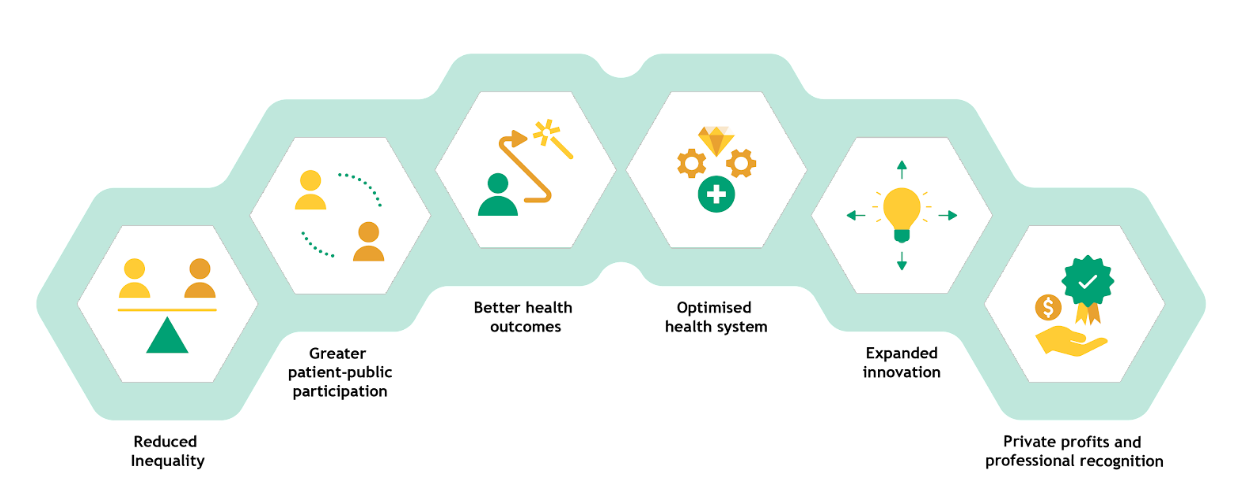
How open health ecosystems are regulated
This article describes our open health value flow model. First, we want to clarify our definition of open health.
In order to address the challenges described above, we need:
- Access to quality data, often in real-time
- Common Technologies, digital tools, and platforms that enable collaboration and data sharing
- Engaged stakeholders that are able to interact and work together.
But common concerns that we need to keep in mind are:
- Health data is personal and sensitive
- Making wrong steps can literally destroy lives or impact their quality of life
- Access to health, wellbeing, and safety are human rights.
So how does an open health ecosystem facilitate relationships and use data and digital tools to enable greater opportunities to generate value and benefits for everyone? Our model describes the flow of value from resources and outputs, and through stakeholder relationships. Our thinking has been advanced by recent work Mark Boyd has done with the Open Data Institute, including the work for the World Health Organization's Data Governance Summits in 2021.
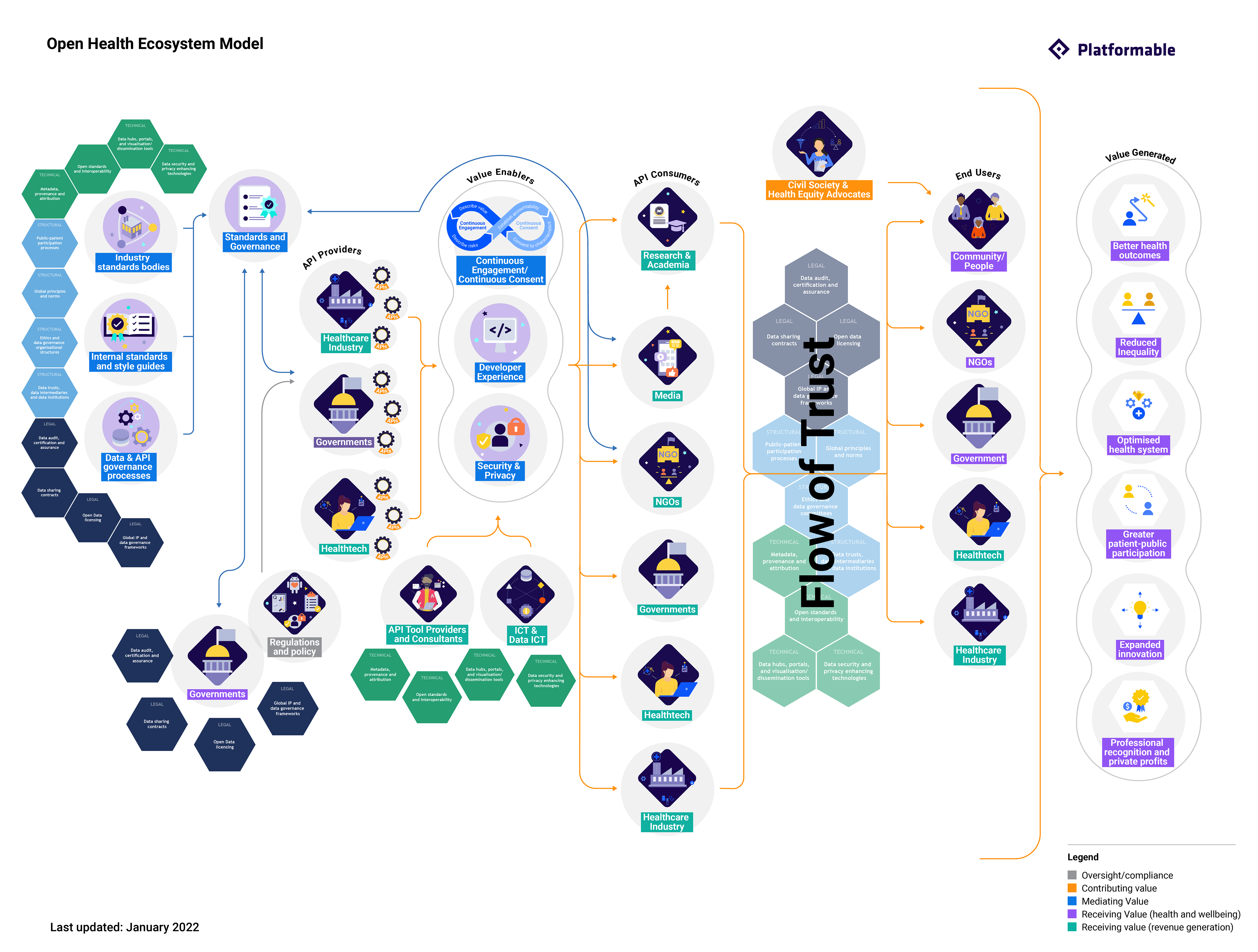
In many cases, governments request regulators and policymakers to establish open health systems to optimise healthcare service delivery and spending, and to enable the use of health data to improve health and wellbeing. Regulators must consider data privacy, health technology assessments and ethical AI development in their policies.
Those with digital health resources can make these available via APIs as components that others can build with. Most often this takes the form of data, available via API, but can also be algorithms and risk calculators, open-source technologies, and other digital tooling that has ways to integrate via API so that they can be used as the raw ingredients in building new products, services or solutions. Health API providers create APIs, often to industry-based standards.
The role of open health API providers
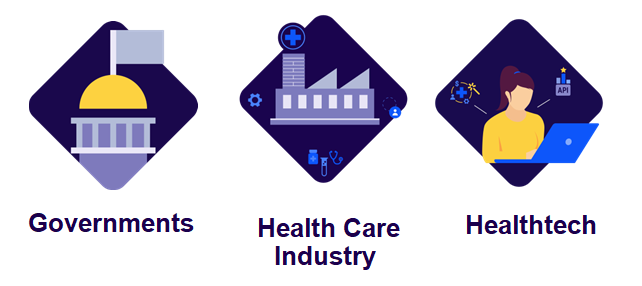
Providers make services available through APIs, for example, by creating access to datasets via APIs or by enabling services to be integrated via APIs. For example, we are seeing some providers share their risk calculators and diagnostic algorithms as APIs so that they can be integrated into software and medical equipment to enable in-device or in-service-software risk assessments. Typical API providers include:
- Government health departments and statistics offices
- Healthcare industry
- Healthtech
Key value enablers in an open health ecosystem
How much value these APIs can create will depend on how well they are documented, and how secure they are. So developer experience and security and privacy are value enablers that can increase how much value is generated from the health APIs. Low developer experience makes it harder for others to integrate with the APIs and build products and services, and low privacy and security means consumers won’t trust the products built with the APIs.
Another important value enabler is a system of continuous engagement and continuous consent. Whereby every step of the way, health data ecosystem leaders and other stakeholders communicate the use of health data, share the value that is being generated, and describe how the risks and vulnerabilities are being addressed. And a certain level of consent increases accountability and reduces oversight of health data users.
API tools providers and ICT systems can help leverage technology to systematically enable APIs to be used as building blocks by:
- Creating common platforms for data governance
- Building APIs to best practices
- Using API lifecycle tools to make APIs available to API consumers.
This will help enhance the potential value that can flow through an open health ecosystem.
The role of open health API consumers
The health APIs are then used by healthcare organisations, non-government organisations (NGOs), governments, researchers, and the media to build products and services. This can happen directly and indirectly. Some examples include:
- Health tech companies taking the health APIs and integrate each one individually into their products.
- Media drawing on available COVID-19 data to create dashboards to inform the public.
- Medical diagnostic tools using algorithms and risk calculators built with APIs.
- Governments using both algorithms and data via API to set thresholds of when the next stage of pandemic response should be established.
- NGOs and governments using APIs to better allocate and distribute PPE.
Flow of trust in open health ecosystems
More than any other open ecosystem that we see, health requires an underpinning of trust and confidence at every step of the way. That's why we see continuous engagement/continuous consent as a core value enabler through which any potential benefits from APIs must flow.
A flow of trust between API consumers and end-users is critical to the flow of value. Trust is developed when robust processes with Structural, Legal, and Technical data governance practices.
Structural components establish oversight and guidance for data governance.
Legal components of data governance help set clear boundaries and enable accountability frameworks to be established.
Technical components help operationalise data governance and give data stewards and data processors promising practices that can be adapted to the local context.
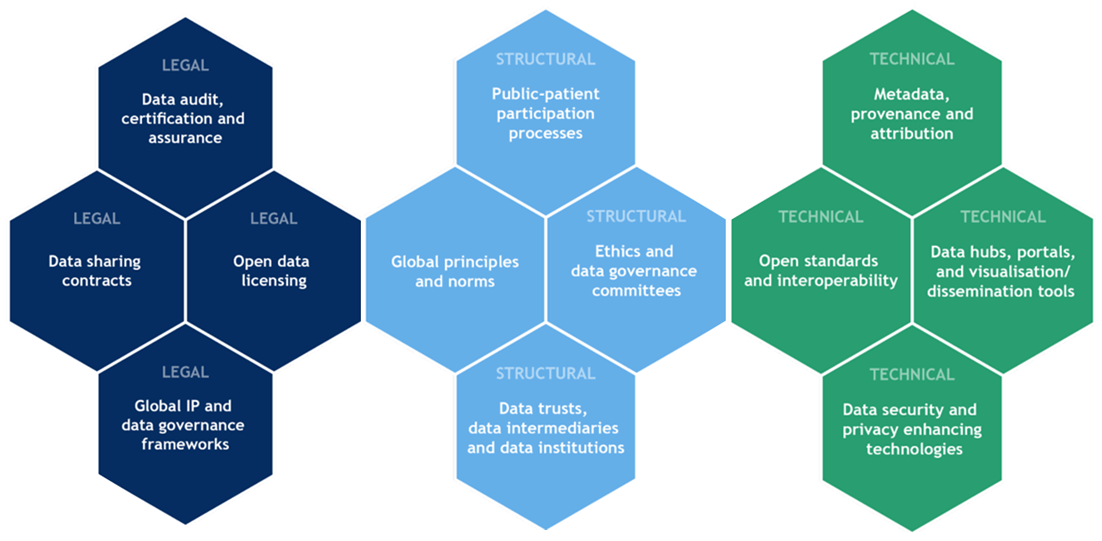
All of these together enable data sharing while protecting individual privacy, and create new partnerships that respect and value the positions of low-income countries, particularly in the Global South.
Health equity advocates also play an essential role in ensuring that the benefits from an open health ecosystem are distributed to those with the greatest health needs.
How end users and beneficiaries receive value from open health ecosystems
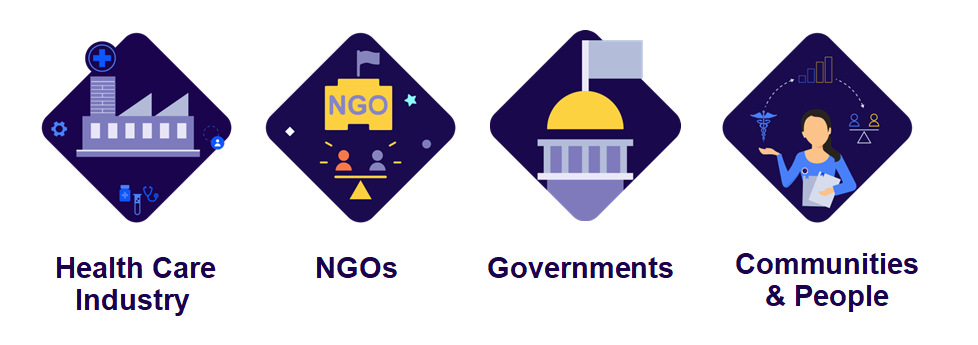
Now end-users are able to use those health tech products and services that have been built with the health APIs.
The end-users contribute to and benefit from the value generated in an open health ecosystem. Everything from apps that help you track your nutrition or sleep patterns, medical devices that automatically distribute insulin, government and media dashboards, and platforms that allow community members to be more actively involved in their chronic health management: the digital products and services being created in an open health ecosystem are only just beginning!
At Platformable we are tracking the products being built and the value being generated, subscribe to our newsletter to be kept up to date on when our open health content and to be informed when we will be starting our open health trends reports in the coming months. You can also reach out and discuss your thoughts on our model with us, feel free to book a time for a chat with our analyst team:

Mark Boyd
DIRECTORmark@platformable.com